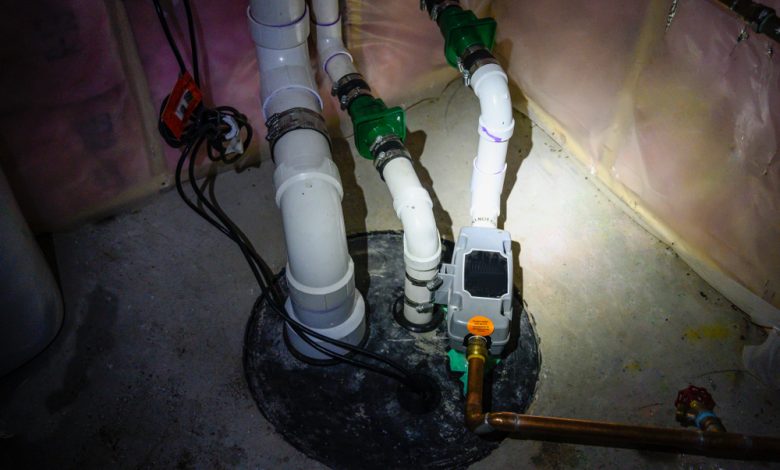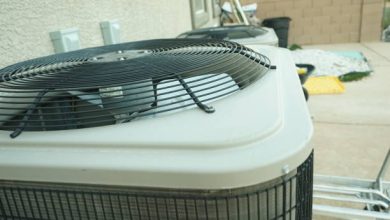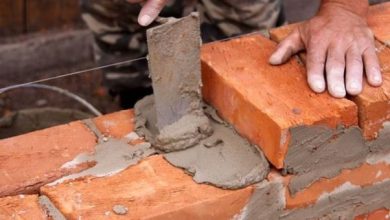How to Install a Sump Pump in the Basement

If your basement’s starting to resemble a mini-lake every time it rains, it’s high time you consider installing a sump pump. Sump pumps are the unsung heroes of home maintenance, saving your space from water damage, mould, and even a broken foundation. In today’s comprehensive guide, we’re diving deeper into installing a sump pump in the basement. With our help, this handy device will be up and running quickly!
Why Do You Need a Sump Pump in the Basement?
So why exactly do you need this nifty contraption? A waterlogged basement is more than an inconvenience; it’s a breeding ground for problems.
Benefits:
- Prevents Flooding: This is especially beneficial during torrential rains or if you live in a flood-prone area.
- Reduces Mold and Mildew: Mold and mildew can wreak havoc on your health and property value. A sump pump reduces humidity and deters mould growth.
- Preserve Foundation: Excessive water can erode your home’s foundation over time. A sump pump protects your home’s structural integrity.
- Protects Valuables: A dry basement means your stored items, be it furniture or sentimental belongings, stay safe and sound.
- Increases Property Value: Homes with functional sump pump systems are often more attractive to potential buyers.
Types of Sump Pumps
Not all sump pumps are created equal, so you’ll want to pick the one that suits your needs.
Pedestal
Pros: Easier to service, typically has a longer lifespan, generally less expensive
Cons: Noisy, less powerful, takes up more space
Submersible
Pros: Quiet operation, efficient pumping, takes up less space
Cons: Usually more expensive, may require more frequent maintenance
Water-Powered
Pros: Doesn’t require electricity, a good backup option
Cons: Lower pumping capacity, not suitable for heavy flooding, relies on adequate water pressure
Necessary Tools and Materials
Getting the right tools is crucial for a smooth installation process. Here’s your comprehensive checklist:
- The sump pump unit: Select based on your basement’s size and water issues.
- PVC pipes: For the discharge line.
- Check valve: To prevent backflow.
- Sump basin: To house the pump.
- Gravel: For drainage around the basin.
- Cement: To secure the basin.
- Electrical wiring supplies: GFCI outlet, wire nuts, electrical tape.
- Teflon tape: To ensure a watertight seal on threaded joints.
- Basic tools: Shovel, screwdriver, hacksaw, drill, level, measuring tape, pliers, wrench set.
Pre-Installation Preparations
Before getting your hands dirty, some prep work needs to be done:
- Permits: Double-check your local building codes. Some areas require permits to install a sump pump.
- Safety Gear: Pay attention to safety. Essential gear includes protective eyewear, gloves, and earmuffs.
- Location: Pinpoint the lowest spot in your basement where water collects. This is where you’ll want to place your sump pump.
Step-by-Step Guide to Installation
By now, you’re probably eager to learn how to install a sump pump in the basement. We’ve got you covered with a step-by-step breakdown.
Digging the Sump Pit
Dig a hole where your sump basin will sit. This pit must usually be around 24 to 30 inches deep and about 18 inches long. The dimensions may vary depending on your pump’s specifications, so read the manual carefully.
Installing the Sump Liner
Next, place your sump basin in the hole and surround it with gravel for better drainage. Once firmly in place, pour some cement around the rim to lock it in position.
Assembling the Sump Pump
Follow the manufacturer’s guide to assemble your sump pump. Although most come pre-assembled, you may need to attach some components like the float switch, impeller, or even the check valve.
Connecting the Discharge Pipe
Fit a PVC pipe into the pump’s discharge outlet. Use Teflon tape to make a watertight connection. Ensure the pipe directs water well away from your home’s foundation—about 20 to 30 feet is a good rule of thumb.
Electrical Wiring
Wire the sump pump to a GFCI outlet. This is critical for safety. If you’re uncomfortable dealing with electrical components, consult an electrician.
Testing
Before declaring victory, test your installation. Fill the sump pit with water and check if the pump activates and effectively discharges the water away from the basement.
Common Mistakes and How to Avoid Them
- Wrong Size: Ensure the sump pump is appropriately sized for your basement’s dimensions and water issues.
- Poor Location: Avoid areas near electrical outlets or flammable materials.
- Incorrect Slope: The discharge pipe should slope away from the house for effective water removal.
Maintenance Tips
Sump pumps aren’t “set and forget” devices. Regular checks can save you a lot of headaches down the line.
- Run a quick check every month.
- Remove any debris from the pump’s screen or inlet opening.
- Inspect the outlet and discharge pipe for blockages.
- Replace the backup battery every 2-3 years.
- Perform a full system test before the rainy season.
Conclusion
There you have it—a comprehensive guide on how to install a sump pump in the basement. We hope you found this blog helpful and informative. So don’t let a flooded basement get you down. Take action, follow our guide, and enjoy the peace of mind of a well-protected home!
Frequently Asked Questions (FAQs)
Q: How much does installing a sump pump in the basement cost?
A: The cost can vary depending on your location, the type of pump you choose, and whether you hire a professional or do it yourself. The pump and installation services can range from $500 to $1,200.
Q: Can I install a sump pump, or need a professional?
A: While installing a sump pump yourself is possible, especially if you’re handy and familiar with basic plumbing and electrical work, hiring a professional can ensure the job is done correctly and complies with local building codes.
Q: Is a permit required for installing a sump pump?
A: Some localities require permits for sump pump installation. Always check local building codes or consult with authorities before starting your project.
Q: How often should the sump pump be replaced?
A: Generally, sump pumps have a lifespan of around ten years. However, this can vary depending on the quality of the pump and how often it’s used. Regular maintenance can also extend its lifespan.
Q: What are the signs that my sump pump needs to be replaced?
A: Frequent cycling on and off, strange noises, and failure to activate during water accumulation are key signs that your sump pump may need to be replaced.
Q: What type of backup power options are available?
A: Battery backups are the most common, but you can install water-powered backup systems or a generator on standby.
Q: Do sump pumps require regular maintenance?
A: Yes, regular maintenance, such as cleaning the filter, checking for blockages, and testing the float switch, can help keep your sump pump in optimal working condition.
Q: How do I size a sump pump?
A: To properly size a sump pump, you’ll need to consider the size of your basement, how prone it is to flooding, and the volume of water you expect to pump. Most residential sump pumps range from 1/3 to 1 horsepower.
Q: What should I do if my sump pump stops working?
A: If your sump pump stops working, check the power source and circuit breaker first. If the issue isn’t power-related, inspect the float switch and inlet for blockages. If you still need help, consult a professional.
Q: Can I connect my sump pump to the sewer line?
A: Connecting a sump pump to a public sewer line is usually against building codes due to the risk of sewage backup. Always discharge water at least 20 to 30 feet from your home’s foundation.



